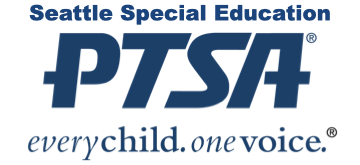Dear Superintendent Jones and School Board Directors,
During the superintendent search process, the Seattle Special Education PTSA testified about the qualities we thought were important for our next Superintendent and also sent the School Board our concerns about the limited family engagement that appeared to be part of the process.
Now that the School Board has made the decision and is entering into a new contract with Dr. Jones, our focus is on the work required to improve the educational experience of our thousands of students with disabilities. We look forward to working with Dr. Jones and building a strong partnership.
In addition to our work supporting the disability community in SPS during the pandemic, we have established three areas of priority for our advocacy work which also intersect with the priorities of the strategic plan – increasing inclusionary practices in our schools and District, drastically reducing the use of restraint and isolation and improving literacy instruction to address learning challenges associated with dyslexia.
With respect to inclusionary practices, we held a Community Conversation About Inclusion in October 2021 that was attended (via Zoom) by over 100 people, including many administrators from the District. Since then, we have had a presentation by the Haring Center of UW about the work they are doing statewide with OSPI to increase inclusionary practices and in April we will have a presentation by Seattle University’s Center for Change in Transition Services about the work they are doing with OSPI to increase inclusionary practices in Career and Technical Education (CTE). After reflecting and processing the information we learned from the Community Conversation About Inclusion in October 2021, we are working towards supporting school communities (via their PTSAs) to reflect and focus on developing practices that will help their school communities become more inclusive.
As you know, we testified several times about the School Board’s revision of Policy 3246, regarding restraint and isolation. As the new policy and procedures are being implemented, we have concerns that even though isolation has been eliminated as a response to challenging student behavior (thank you!), we are hearing anecdotally about more students being restrained since the policy implementation last September. We are also hearing from many families about incidents involving their children that are not being reported. We would like to engage with the District on how to make sure that school leaders recognize that reporting restraint incidents does not make them or their school “look bad” but is a critical tool needed by staff to provide technical support to reduce restraints – both on an individual student level and on a school level. We also want to engage more with the District on the “front end” – recognizing that behavior is a form of communication and that unless we understand the underlying causes of challenging behavior as well as evidence-based strategies to help children and adults manage situations that lead to cha llenging behavior, the behaviors will continue and adults will still feel they have no choice but to restrain a student. We have brought several training opportunities, including Dr. Ross Greene’s offer of no-cost training, to the District’s attention and hope to deepen our collaboration with the District in this area.
Implementing changes in literacy instruction is critical work, especially given the 3rd-grade reading goal in the strategic plan. Our Dyslexia Committee met with staff last year as they were choosing the literacy screener being used in K-2 and planning changes in instructional practices. We provided input and suggestions. On March 22, we are sponsoring a presentation on the Science of Reading 101, presented by the Washington State Branch of the International Dyslexia Association (WABIDA) and on May 10 we will present a workshop on Understanding Dyslexia with Laura Rogan, the author of Wired for Reading. We hope to partner with the District to understand whether our teachers are receiving sufficient professional development to implement the instructional changes effectively and to foster effective communication between families and the District as this work continues to roll out.
Finally, we continue to support families and advocate to ensure that our children have access to the free and appropriate public education they are entitled to under federal law. As our schools transitioned back to in-person learning, we raised concerns about those students with disabilities who needed to continue accessing education remotely. We brought to the District questions and concerns about recovery services, mental health supports, and appropriate staffing. We hope to find ways to improve communication between families and the District.
Dr. Jones, our Board would like an opportunity to meet with you and hear from you directly on how you see the priorities the Seattle Special Education PTSA has identified above fitting into your vision for the District. We would like to discuss how we can better partner with you as those priorities intersect with the District’s work on the strategic plan. Respectfully, unless the work under the strategic plan attends to the multiple ways in which students, particularly African American boys, experience marginalization, the District is not likely to be able to meet its goals. We hope to add value by bringing a disability lens to the work that can contribute to a more nuanced understanding of the systemic barriers to academic success that students with disabilities face.
We are excited to partner with you in ensuring the best possible outcomes for all Seattle Public Schools students and the communities we serve.

